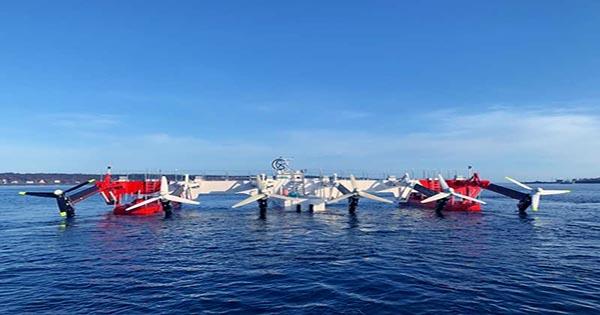The “world’s most powerful” tidal turbine is tied to the onshore power grid in Orkney, a northern island in Scotland, and ready for a clean, green power supply. The tidal turbine, known as O2, was built by the Scottish engineering firm Orbital Marine Power. On July 28, they announced the O2 “starting grid-connected power generation” at the European Marine Energy Center (EMEC) in Orkney, which means it is all set up and supplying power to the local power grid.
The 74 meters long (242 feet) turbine is said to be the “most powerful” tidal turbine in the world. It will be in Arkansas for the next 15 years with the capacity to meet the annual electricity demand of around 2000 UK homes.
The 2MW turbine is also set to receive EMEC’s land-based electrolyzer that will produce green hydrogen (hydrogen made without fossil fuels) that can also be used as a source of clean energy. “Our vision is that this project will play a role in tackling climate change by harnessing global tidal resources while creating a new, low-carbon industrial sector,” said Andrew Scott, chief executive of Orbital.
Tidal energy is used to convert energy from the natural rise and fall of ocean tides and currents. The O2 turbine consists of two sinking blades connected to a 20-meter (65-foot) diameter turbine that will move with the alternating currents off the coast of Orkney for power generation. The power is then transferred from the turbine along the seabed to the local shore power network. This method of harnessing energy is not only desirable because it does not reveal carbon emissions, but it is more predictable than other renewable energy sources such as solar or wind energy, which can be affected by the weather.
Tidal power generation is still in its infancy and there are relatively few tidal power plants in the world, but many argue that parts of the world could benefit greatly from this innovative form of hydropower, especially in coastal areas such as the United Kingdom. The largest tidal power operation in the world is the Sihwa Lake Project, located on the west coast of South Korea, which uses enough energy to meet the internal needs of a city of 500,000 people.
However, once fully operational, the MeyGen tidal power project in northern Scotland hopes to snatch its title.















